Many Voice proponents have felt anguish and grief since October,when 60 per cent of to amend the Constitution to recognise Indigenous peoples and create a body to advise the government on policies that affect them.
But now,senior Aboriginal political leaders have provided this masthead with their personal views and insights on what the Albanese government needs to prioritise in 2024 and beyond.
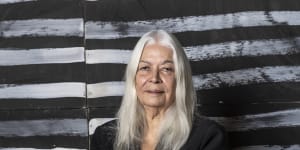
Professor Marcia Langton advocates a place-based approach,such as the use of regional advisory bodies.Tim Bauer
Many share the view that Aboriginal community voices need to be heard in policy and program development and service delivery – consistent with the federal government’s indications after the referendum that it would consider establishing interim listening bodies to provide advice directly to the prime minister.
The need for a renewed emphasis on meeting the targets of the Closing the Gap strategy – aims to reduce inequalities in health,education,and poverty in Aboriginal and Torres Strait Islander communities – was also urgent and clear.
Professor Tom Calma and Professor Marcia Langton co-authored the final report for a co-designed Voice,commissioned by the Morrison Coalition government,before their appointments as co-chairs of the Albanese government’s senior advisory group on an Indigenous Voice.
They share a view that regional Voice bodies need to be established to provide governments with crucial place-based responses and practical knowledge when developing policy.
Langton said the National Indigenous Australians Agency – a government body set up to ensure First Nations people are heard,recognised and empowered – could implement regional Voice advisory bodies without the need for legislation.
They could also be legislated at the state level,she said.
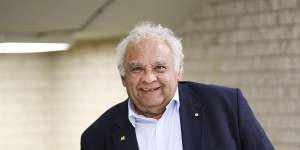
Tom Calma says the federal government should implement the recommendations of relevant royal commissions.Rohan Thomson
”We need a place-based approach regarding policy input and program delivery because of the diversity of our communities,” Langton said this week.
“Without regional bodies having an input into the policies that affect their lives,roughly one-third of the Indigenous population are never going to close the gap in their lifetime.
“They are so far behind in terms of disadvantage,they are in such dire straits,living in extreme poverty in under-serviced communities.”
Langton said it was imperative that federal and state governments shared access to critical data regarding Indigenous communities at the regional level to better inform policy frameworks.
Western Australian Greens Senator Dorinda Cox,the party’s spokeswoman on First Nations policy,said more funding was required for the Aboriginal community-controlled organisations sector,particularly healthcare.
Federal and state governments needed to start building capacity in these organisations at the local and regional level,Cox said.
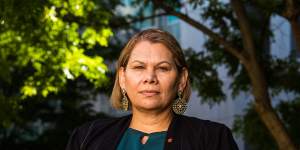
Western Australian Greens Senator Dorinda Cox believes greater funding for community organisations is needed.James Brickwood
“There needs to be stability in their funding contracts,which builds stability in their staffing around employment,” she said.
Former Coalition minister for Indigenous Australians Ken Wyatt,who over its decision under the leadership of Peter Dutton to campaign against an Indigenous Voice,backed regional advisory bodies to government but said more community voices were needed across all Aboriginal organisations.
“Organisations talk about being community-controlled,but they are,in fact,controlled by their financial members,not the total community they serve,” he said.
“Go and spend a day or a week in community,sitting and speaking with the people. Not with the organisations,but with the people.
“I would rather see governments sit with communities and identify their needs and work on the priorities. Because nobody in government really spends time with communities to look at what the gaps are.”
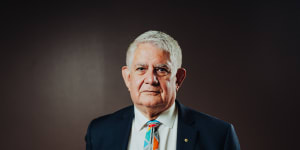
Former Coalition Indigenous Australians minister Ken Wyatt says the best insights come from interacting with communities directly.Dion Georgopoulos
Constitutional law expert Professor Megan Davis,who coordinated the national dialogues that led to the delivery of the Uluru Statement from the Heart in 2017 that called for the Voice,supported Wyatt’s comments.
She said the issues the Voice was seeking to address had not gone away with the referendum.
“Governments and bureaucrats have to find a way to speak to Aboriginal men and women residing in communities and not via existing organisations,” she said.
“This is not because Indigenous organisations don’t play an important role,it is that they are contracted to deliver important services and programs. ”
Beyond regional representative bodies,Calma said he expected the Albanese government would proceed with a truth-telling and agreement-making process via a Makarrata Commission.
Originating with the Yolgnu people of Arnhem Land,in the Northern Territory,the concept of Makarrata means two parties coming together after a struggle and seeking to make things right. The government committed $5.8 million to setting up a Makarrata Commission as part of its first federal budget in 2022.
“The PM said he was going to prosecute the Uluru Statement in full. The second and third tranches of that,in truth-telling and agreement-making,are going ahead,” Calma said this week.
Calma also urged the federal government to implement the recommendations of relevant royal commissions,specifically those related to women and children’s safety,the removal of Indigenous children from their families and cultures and Aboriginal deaths in custody.
He also said it must bolster the Australian Human Rights Commission’s national campaign,.
Investment in the anti-racism program would take it into schools,workplaces and the healthcare sector,which Calma said was critical after,discrimination and hate speech mushroomed during the referendum campaign.
“We need a strong statement from government about addressing racism,” he said.
“Government needs to ensure they provide the funding to enable[the program] to have that scale. If we aren’t perpetrators of racism,racism will stop.”
Though Wyatt questioned whether additional investment in any anti-racism programs could genuinely change people’s attitudes.
“Australia has a view it is not a racist country,or that racism doesn’t exist here. A focus on that matter alone will not resolve racism,” he said.
The rejuvenation of Indigenous leadership at the federal level is also a pressing issue for Langton.
With the failure of Voice campaign,the promotion of a younger cohort of Indigenous people into key positions was “incredibly important”,she said.
“We have to make sure younger people are taking the reins now,” she said.
“We need to bring them into meetings,give them supports,put them into the senior roles,” Langton said,adding that Yawuru man Senator Pat Dodson – who due to health reasons – would be “impossible” to replace.
Langton and Calma both said inroads must also be made in of Indigenous suicide,imprisonment and out-of home care and early development for children.
Calma said the Albanese government would make a statement of renewed commitment to the National Agreement on Closing the Gap – with a focus on housing,health and education – ahead of the resumption of parliament in early February.
The agreement is a partnership between the Australian government,the states and territories and a coalition of Aboriginal and Torres Strait Islander peak bodies. It has19 national targets across 17 socio-economic areas but,as of last year,only four of them are on target,according to the most recent Productivity Commission report.
Langton said poverty and food security in rural and remote Aboriginal communities were key issues.
“Fifty per cent of Aboriginal communities have water that falls far below the potable standards set by the World Health Organisation,” she said.
“And if you’ve ever been into a community store,you will see that you can’t afford anything.”
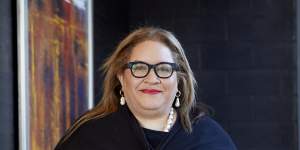
Megan Davis says difficult structural reform was needed to make progress.Natalie Boog
Cox,who said Closing the Gap targets generally “got sidelined” during the Voice referendum campaign,identified a structural issue:“There’s the four that are going backwards,but we don’t even have data sets for another four of the targets.”
But Davis said the gaps would not be closed without “difficult” structural reform.
“The referendum result does not diminish or extinguish the exigency of structural reform,” she said.
“Institutional arrangements and structural reform are social determinants of improved health and other outcomes. You cannot improve justice outcomes without structural reform. The referendum result tells us this connection is not well understood in the broader community.”

Start the day with a summary of the day’s most important and interesting stories,analysis and insights..